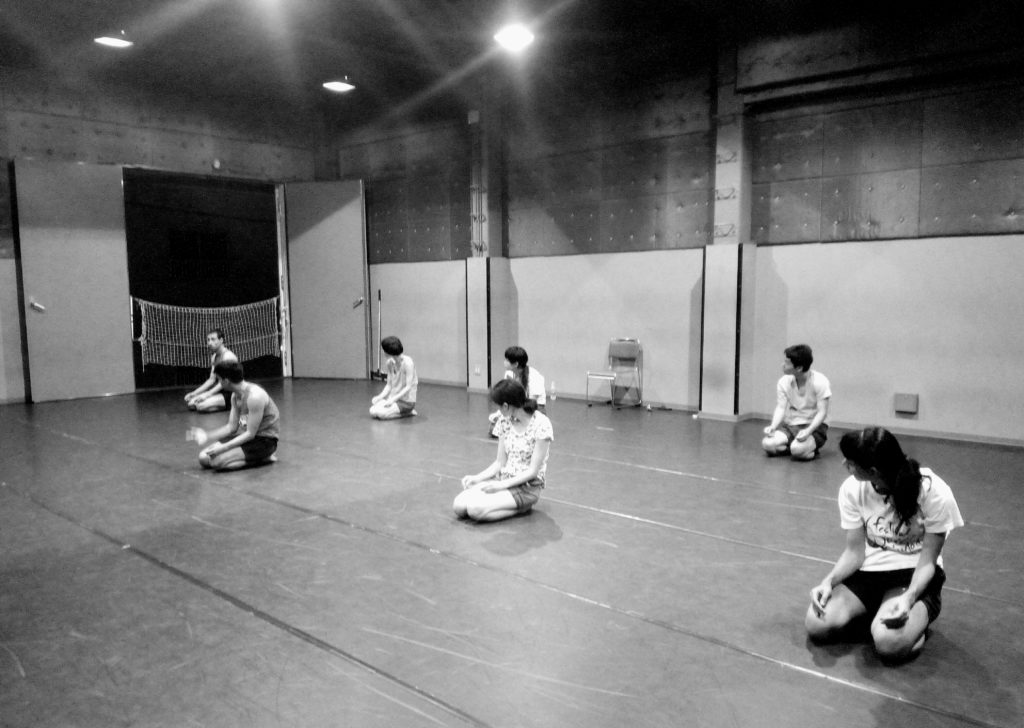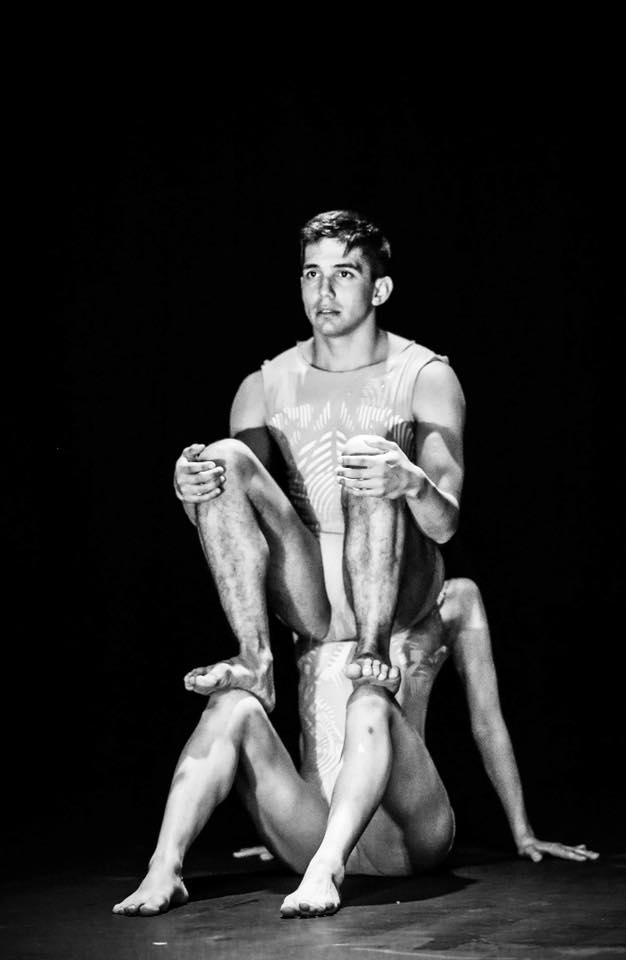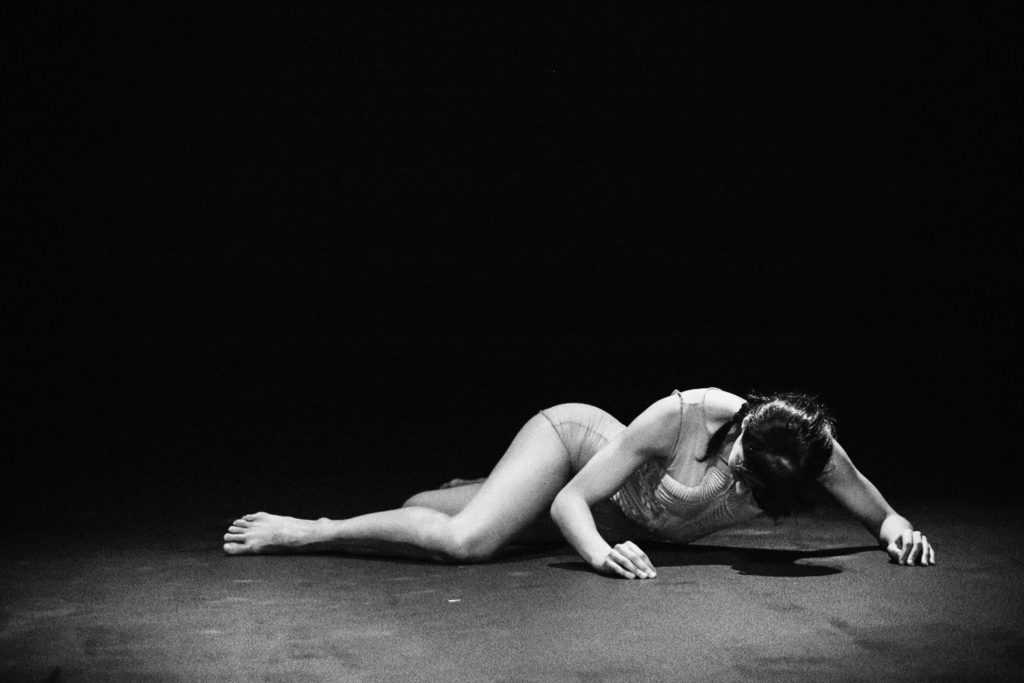For English, please scroll down

PROYECTO DE CREACIÓN COREOGRÁFICA INTERNACIONAL ENTRE EL CENTRO DE PRODUCCIÓN DE DANZA CONTEMPORÁNEA (CEPRODAC) -México- Y PUNTCUMUN Co. -Japón- / Curadora / Dramaturgista
En el año 2014, realicé en Tokio Japón, una residencia de investigación artística sobre la danza contemporánea en Japón. Entre varios artistas, destacaba Kaori Seki -coreógrafa y directora de la compañía PUNCTUMUN- quien en sus obras al concebir el tiempo de forma elongada, lo estrechaba hasta crear razones para que el movimiento sucediera. También era notoria su indagación en el terreno de lo sensible versus la emocionalidad, hasta llegar a una esencia animal.
Ver algo tan único y sutil, invariablemente llevó a hacerme preguntas sobre el bagaje corporal predominante en la escena de la danza contemporánea mexicana, y una larga reflexión sobre cómo vivimos el tiempo en nuestro país, no sólo cotidianamente, sino trasladado también a nuestras formas de producción en el campo artístico.
Fue dos años después, al regreso de Eleno Guzmán del TPAM, que nos sentamos a discutir e imaginar las posibilidades de expandir un diálogo de cuerpos y de formas de concebir los procesos, colaboraciones e intercambios artísticos internacionales.
El trabajo de Kaori Seki reverberaba en ambos y representaba un contrapunto a las indagaciones corporales y formas de producción que hasta esa fecha, se habían realizado en Ceprodac.
Así nació RAISU; como un encuentro, como un diálogo artístico entre dos compañías (Punctumun y Ceprodac), que intentarían tomarse el tiempo para encontrarse, conocerse, contaminarse y hacer surgir una pieza. Es por esta razón que el formato de creación para Raisu, dividido en tres fases, tomó cerca de seis meses y muchas voluntades internacionales.
Para un proyecto como éste, pensamos era esencial un acompañante artística del proceso, que mediara, investigara y dialogara con los bailarines de Punctumun, Ceprodac, Kaori Seki y el equipo creativo mexicano; para unir las inquietudes y sucesos de todas las fases de la residencia, mismos que irían revelando una pieza por-venir. Fue así como surgió la figura del (la) dramaturgista para el proceso, figura que por primera vez incorporó el Ceprodac a una producción.
Raisu se trata de provocar aperturas, estados de encuentro; también apela al ejercicio del cuidado hacia los otros y los procesos; a darse el tiempo para que cuerpos de distintas geografías e imaginarios conversen, y entonces digan lo que tengan que decir y la escucha, suceda.
El resultado de esta residencia, fue la creación de la pieza Hi Wo Mu Gu en julio 2018, en la Ciudad de México. A su vez, esta pieza será estrenada en el TPAM Fringe (Performing Arts meeting in Yokohama) en febrero de 2019.
En Hi Wo Mu Gu, Kaori Seki quiso hablar de ese espacio de tiempo que hay entre la vida y la muerte y la búsqueda de qué es ese “inter” que se dio en y en los movimientos de cada uno de los performers.

Fotos: David Flores Rubio 

English
CHOREOGRAPHIC CREATION PROJECT BETWEEN THE PRODUCTION CENTER OF CONTEMPORARY DANCE (CEPRODAC) -Mexico- AND PUNTCUMUN Co. -Japan- / Curator / Dramaturgist
In 2014, I made an artistic research residency in contemporary Japan in Tokyo, Japan. Among several artists, Kaori Seki – a choreographer and director of the PUNCTUMUN company – stood out. In her works, when she conceived time in an elongated way, she narrowed it to create reasons for the movement to happen. It was also notorious his investigation in the field of the sensible versus the emotional, until arriving at an animal essence.
Seeing something so unique and subtle invariably led me to ask questions about the predominant body baggage in the Mexican contemporary dance scene, and a long reflection on how we live in our country, not only daily, but also transferred to our forms of production in the artistic field.
Two years later, after the return of Eleno Guzmán from TPAM, we sat down to discuss and imagine the possibilities of expanding a dialogue of bodies and ways of conceiving processes, collaborations and international artistic exchanges.
The work of Kaori Seki reverberated in both and represented a counterpoint to the bodily inquiries and forms of production that until that date, had been made in Ceprodac.
This is how RAISU was born; as an encounter, as an artistic dialogue between two companies (Punctumun and Ceprodac), that would try to take the time to meet, get acquainted, contaminate themselves and make a piece emerge. It is for this reason that the creation format for Raisu, divided into three phases, took about six months and many international wills.
For a project like this, we thought an artistic accompanist of the process was essential, who would mediate, investigate and dialogue with the dancers of Punctumun, Ceprodac, Kaori Seki and the Mexican creative team; to unite the concerns and events of all phases of the residence, which would reveal a piece to come. This is how the figure of the dramaturgist for the process emerged, a figure that for the first time incorporated the Ceprodac into a production.
Raisu is about provoking openings, states of encounter; it also appeals to the exercise of care towards others and processes; to take time for bodies from different geographies and imaginaries to converse, and then say what they have to say and listen to it, happen.
The result of this residency was the creation of the piece Hi Wo Mu Gu in July 2018, in Mexico City. In turn, this piece will be premiered at the Fringe TPAM (Performing Arts meeting in Yokohama) in February 2019.
In Hi Wo Mu Gu, Kaori Seki wanted to talk about that space of time between life and death and the search for what is the “inter” that occurred in and in the movements of each one of the performers.
Comentarios recientes